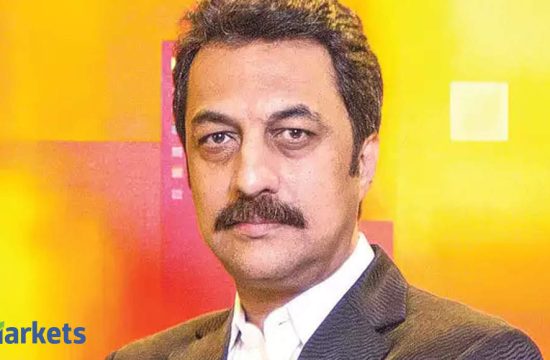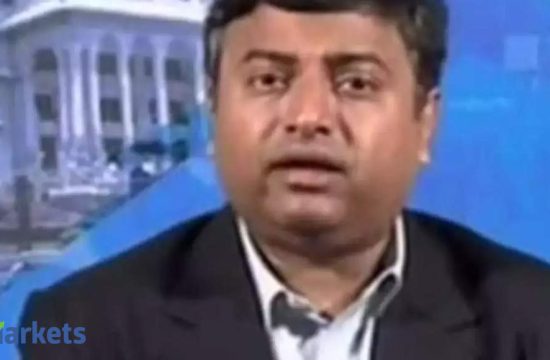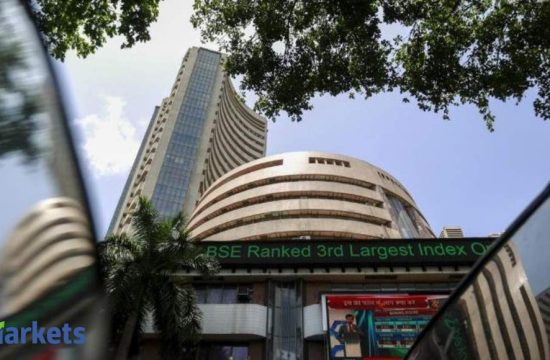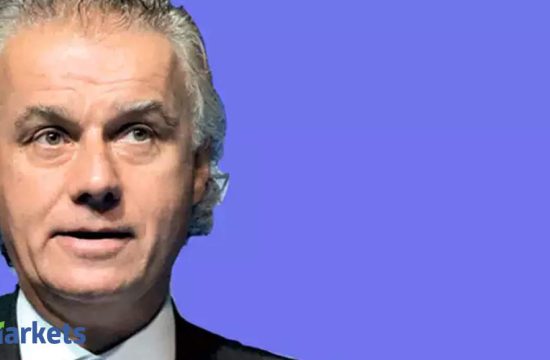
Canadian value investor François Rochon says stock investors should behave like artists, independent in their thoughts and actions. If the stock selection process is rational, investment returns will eventually follow.
A follower of the Ben Graham and Warren Buffett philosophy, Rochon is the president and portfolio manager at the Montreal, Canada-based Giverny Capital and has been responsible for amassing exceptional investment returns with his portfolio yielding 15.7 per cent CAGR since inception.
Why investment is an art, not science
Francois, an engineer by education, finds the rigidity and precision of engineering to be a handicap to successful investing. He feels engineering and investing are almost diametrically opposite, as there is no precision in investing and it is more instinctive in nature.
Quoting Nikola Tesla, he says: “Instinct is something which transcends knowledge. We have, undoubtedly, certain finer fibres that enable us to perceive truths when logical deduction, or any other wilful effort of the brain, is futile.â€
An investor can be considered successful even when wrong 40 per cent of the time, but an engineer can’t afford to go wrong for even 0.4 per cent of the time. Which is why Rochon sees investing as more of an art than science.
He says to be a successful value investor, it is necessary to ‘master the art of investing’.
“To master any art form, begin with what you love. You’ll need to study the art’s masters, and as a painter paints, you must invest. You’ll develop your own unique style, an independent mind, and you’ll need to always strive for improvement,†he said in an interview with Talks at Google, whose video is available on YouTube.
Qualities required to master investing
Rochon says an investor needs to follow an unconventional approach to amass wealth and should hold the ground firm even if others fund him/her a bit eccentric or rash.
“Like most great artists, it’s likely you will be seen as a little eccentric, rash and unconventional. If your goal is to obtain better results than the average, you’ll have to be able to stand on your own. You cannot achieve this by applying the same logical approaches as the herd,†says he.
Rochon believes investors who can think independently and develop rationality, humility and patience in their behaviour can become masters of investment.
“Investors whose mindset and time horizon mirror everyone else’s, those who own lots of companies and believe they are ‘smarter’ and can predict the market, do not beat the market. It’s those investors who think for themselves, own very few, carefully selected companies and develop the right behaviours (rationality, humility and patience) become master of investment,” he says.
Secret to Giverny Capital’s performance
Outlining the factors that lead to Giverny Capital’s outstanding returns, Francois says the company focuses on investing in firms with solid financial strength, good business models, competent managements that have long-term visions and attractive acquisition price.
“We mostly look for companies with an ROE higher than 15 per cent, with EPS growth above 10 per cent and a debt-to-profit ratio below four times. We also search for good business models; those businesses are market leaders, have competitive advantages and low cyclicality. We ensure the management teams have skin in the game, capital allocation competency and are long-term thinkers. Finally, Giverny requires an acquisition price that affords them the opportunity to double money over five years. To ensure this, they need an estimate of what the company can earn in five years,†he reveals.
How to identify corporate masterpieces
Francois is of the view that there are certain companies like Ikea, Geico, Apple, McDonalds, Gillette, Google and Starbucks Coffee, which have a history of being very profitable businesses and have given huge returns to investors over time.
He calls them ‘corporate masterpieces’ and feels they have the quality of being both unique and rare. Francois feels investors need to find companies with moats in order to be able to discover these ‘corporate masterpieces’.
“Moats always keep changing. There are always new companies with moats; some are expanding, some are shrinking. We have to follow that closely. If I had to choose one criteria to help me decide what the direction of the moat is, it’s the management. Moats are not built by angels, they are built by human beings. What makes a moat grow is something in the culture of the company. It doesn’t come from thin air. It comes from the top management that builds that culture, then it translates into a moat and high return on equity for shareholders,†says he.
How to gain psychological edge in investing
To gain psychological edge in investing, an investor should employ three behavioural competitive advantages — patience, humility and rationality, says Francois.
In terms of humility, Francois says as investors can’t predict macro-economic events, they shouldn’t even try and humbly accept this fact. Also, one should stick to the ‘circle of competence’, strive to recognise and rectify mistakes, and should always look for improvements.
“I would say the greatest quality of Warren Buffett is not necessarily intelligence, it’s humility. He is the greatest investor of all time, but he is still very humble. He is always looking to improve and learn. He’s still striving for new learning every day. If you have those qualities, you will succeed in almost anything you do,” says he.
When it comes to rationality, Francois advocates avoiding fads, even if it means other investors are performing better and making more money. “If you don’t understand a company, stay away. You play an easier game when you are very selective and you just go for companies you understand,†he feels.
Francois says it’s critical to not get influenced by stock market quotations in the short run. “By accepting that you do not know the future, you can focus on what’s controllable, which is finding companies you can understand and which have a competitive advantage. Then, you should own great companies. Markets do fall, but over time you will still be okay. Owning great companies, and not trying to predict the stock market, is key to beating the index in the long run,” says he.
In terms of patience, Francois says it is not the ‘ability to wait’ but the ‘ability to keep a good attitude while waiting’ which is an essential quality required in an investor.
“A ‘good attitude’ is one where you focus on what is happening to the company, and not the stock price. If the underlying company’s earnings are growing, over time the stock price would reflect those improved earnings. Don’t confuse patience, however, with stubbornness. When an investment doesn’t work, check to make sure the company’s fundamentals aren’t deteriorating. If they are, get out,” he says.
How to avoid investment blunders
Francois says sometimes the psychological pressures on investors lead them to make blunders in investing.
To overcome these psychological pressures, Francois advises investors to set low expectations from the start, which will make them better prepared psychologically to deal with bad years or bad investments.
He advises investors to keep in mind the ‘Rule of Three’ while investing, which can ease some pressure off them. The three rules are-
- One year out of three, the stock market will decline 10 per cent or more
- One stock purchased out of three will not perform as expected
- One year out of three, you will underperform the index.
How to solve the dilemma of buying expensive ‘masterpieces’
Francois says investors may often face the dilemma in their quest for buying masterpieces, as such stocks can be expensive and tend to trade at higher P/E multiples than the widely perceived value stocks.
He suggests keeping a long-term horizon and estimating what the company’s value might be in the future than trying to focus on the current P/E ratio.
If buying at the current price and selling at that future value can deliver a 15 per cent per annum return, it’s likely to be an attractive investment in spite of a higher multiple. This process is also useful to avoid ‘cheap’ stocks which look attractive and are widely regarded as value traps, he says.
“We try to focus on the very long term. We try to look five years into the future and come up with our best judgement on what the EPS should be in five years. Having this long-term horizon can help you defocus on today’s [higher] P/E ratio. It goes the other way, if you find a cheap stock, but look five years into the future and don’t see any growth prospects. Then there is no real reason to believe the stock will be higher in five years. It can be higher in three months just because the P/E has gone from 10 to 12. But we don’t try to invest for three months. We try to invest for at least five years,” he says.
Don’t fall in love with a particular stock
Francois says a wise investor might love the art of investing, but should remain rational and not fall in love with a particular stock.
“You want as large a field of knowledge as possible while remaining within your circle of competence. You need to be open-minded, yet maintain a balance of thought. You need to be able to value a business but be able to go beyond the numbers. You must have patience, but not stubbornness. Finally, you need discipline, but also the wisdom to break the rules,†says he.
So, according to Francois, an artistic investor focuses on intrinsic value, maintains a long-term horizon, avoids short-term value traps, focuses on corporate masterpieces and resists fads and popular beliefs.
Hence, Francois believes while the scientific method of investing may provide investors short-term success, it’s the ‘art of investing’ which can help one go beyond the numbers and pick long-term corporate masterpieces.
(Disclaimer: This article is based on François Rochon’s presentation at Talks @ Google whose video is available on YouTube)









